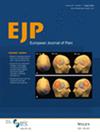Acute Postoperative Pain in Orthopaedic Trauma and Non-Trauma Patients: An Analysis of the China Acute Postoperative Pain Study (CAPOPS)
Abstract
Background
The rising volume of orthopaedic surgeries highlights the importance of optimal postoperative pain management, especially for trauma patients who frequently suffer inadequate analgesia and delayed recovery. This multicenter study aims to evaluate the prevalence of acute postoperative pain and identify contributing factors in traumatic and non-traumatic orthopaedic patients.
Methods
This multicenter study analysed adult orthopaedic surgery patients from the China Acute Postoperative Pain Study between September 2019 and August 2023. Patients with preoperative acute physical injuries requiring surgical intervention were defined as trauma patients. Using multivariate regression, we compared pain outcomes between trauma/non-trauma groups and identified risk factors for moderate-to-severe postoperative pain.
Results
Among 10,892 orthopaedic patients (2833 trauma, 8059 non-trauma), trauma patients showed higher rates of moderate-to-severe pain (57.3% vs. 50.1%), experienced more anxiety and helplessness, and had a greater desire for additional pain management than non-trauma patients. Trauma was associated with the development of moderate-to-severe postoperative pain in both uni- and multivariate analyses (p < 0.001). Risk factors for postoperative pain differed: age over 65 years and preoperative chronic pain were significant in non-trauma patients, whereas intraoperative non-opioid analgesics and local anaesthetic infiltration were associated with a decreased incidence of moderate-to-severe postoperative pain in trauma patients.
Conclusions
Over half of orthopaedic surgery patients experienced moderate to severe postoperative pain, with trauma patients reporting higher levels and greater impacts on their activities and emotional state, along with a greater need for additional pain relief. Distinct risk factors for trauma and non-trauma patients highlight the need for personalised perioperative analgesic strategies.
Significance Statement
This study advances perioperative pain management by identifying trauma as an independent risk factor for moderate-to-severe postoperative pain in orthopaedic patients, with distinct risk profiles for trauma and non-trauma subgroups. Trauma patients reported higher pain levels, greater distress and increased analgesic needs. These findings directly inform clinical practice, emphasising the need for personalised, risk-stratified pain management to improve recovery. The results provide an evidence-based framework for optimising analgesia in both trauma and elective orthopaedic surgery.


 求助内容:
求助内容: 应助结果提醒方式:
应助结果提醒方式:


